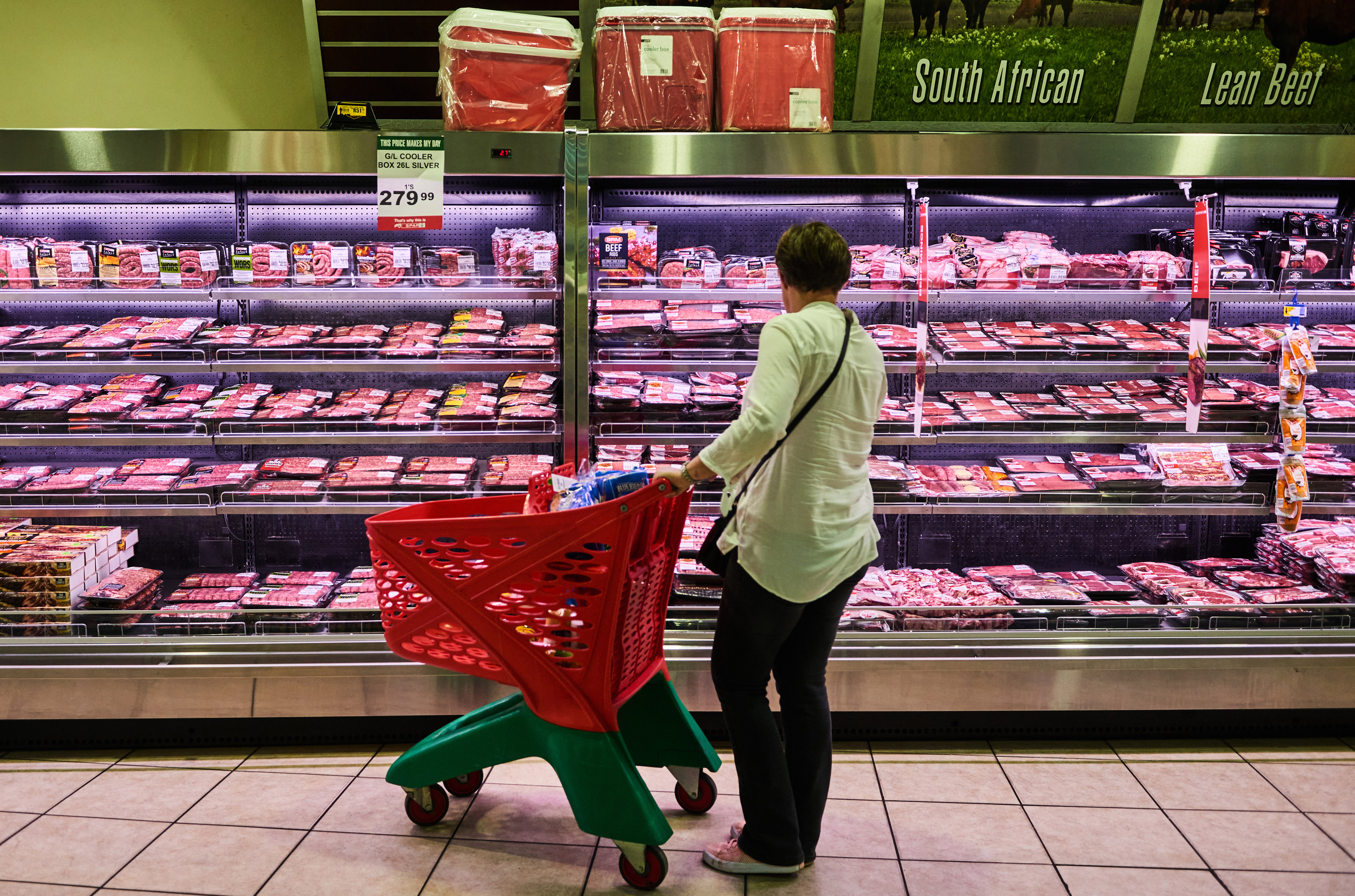South Africa’s consumer price index (CPI) accelerated to a 3% year-on-year increase in June, up from 2.8% in May.
While the increase is modest and still comfortably at the rock bottom end of the South African Reserve Bank’s (SARB) 3% to 6% target range, it underscores the strain of rising food prices, especially meat.
This marks the first increase after two months of stability and comes ahead of the SARB’s Monetary Policy Committee (MPC) meeting on 31 July 2025, where the prospect of a rate cut remains in focus.
Food costs climb
Food prices climbed to a 4.7% year-on-year increase in June, up from a 4.4% increase in May.
“Meat — particularly beef — continues to be the main driver of food inflation. Beef prices spiked for a third successive month, with high annual and monthly increases recorded for stewing beef, mince and steak,” Statistics South Africa (Stats SA) said.
Stewing beef prices alone rose by an annual 21.2%, the fastest pace on record since the current CPI series began in January 2017.
Read more: Unaffordable — beef prices contribute to food inflation uptick while headline inflation remains low
Why are meat prices so high?
Wandile Sihlobo, chief economist at the Agricultural Business Chamber, said the surge was driven by two shocks, both easing now.
First, an avian flu outbreak in Brazil led South Africa to halt poultry imports from that country, causing panic in the market, he said. Those restrictions had since been lifted, and imports should recover soon.
Read more: Explainer: South Africa’s chicken vaccine play may already be too late
Second, an outbreak of foot-and-mouth disease hit South Africa’s beef sector, triggering concerns about supply and panic buying, Sihlobo noted.
“Slaughtering has now resumed in the major feedlots, and we are seeing some easing in red meat prices, which should be reflected in the inflation figures of the coming months.”
Read more: New foot and mouth disease outbreak among Free State cattle, 270 cases now in 5 provinces
He added that temporary export restrictions during disease outbreaks eventually increased domestic meat supply, which should further ease prices.
Fruits and vegetables also climb
Other food categories also saw steep increases, with fruits and nuts up 13.2% and vegetables up 13.6% annually for the second consecutive month.
Items such as beetroot, lettuce and carrots saw sharp price increases, while peanuts were slightly cheaper.
“We also view the recent increases in vegetable prices as a temporary blip due to weather issues, and expect supplies of various vegetable products to recover significantly in the second half of the year,” Sihlobo said.
Some relief in the trolley
Not everything is pricier. Cereal prices cooled in June, helped by cheaper white rice and hot cereals.
Dairy also provided some relief.
“Several dairy products are also cheaper than a year ago. Lower prices were recorded for fresh full-cream milk, fresh low-fat milk and eggs,” Stats SA said.
Even maize meal, a staple that has seen persistent increases, slowed to a monthly change of 0.4% in June, the lowest since November 2024.
Fuel keeps a lid on inflation
According to Stats SA, fuel is on average 11.2% cheaper than a year ago. Although still significant, this decline is less steep than May’s 14.9% year-on-year drop.
Read more: A ‘tough balancing act’, but there’s unhappiness inside and outside GNU over fuel levy increase
“The fuel price fell by a marginal 5c per litre, essentially not contributing to the inflation outcome, and supporting the low nature of inflation in the second quarter of the year, along with weak economic demand,” Annabel Bishop, the chief economist at Investec, said in a CPI update.
The transport category shaved 0.5 percentage points off headline CPI in June, said Stats SA, offsetting some of the upwards pressure from the food category.
What this means for you
- Rising meat prices are making weekend braais more expensive, although this may change in the months ahead.
- Higher prices for staples like carrots and lettuce are stretching grocery budgets.
- Cheaper milk, eggs and cereal provide a small offset.
- If the SARB cuts interest rates, loan and credit repayments could get cheaper.
- Prices are rising at a slower pace than last year, meaning wages may stretch further.
- Food price increases are anticipated to be temporary, so as local supply improves, expect some easing in the coming months.
How inflation hits your budget
For now, inflation remains low by historical standards, but rising food and meat prices are hitting household budgets.
With inflation still at the lower end of the SARB’s range, economists argue that the bank has room to cut rates.
“Such low inflation provides considerable support for consumers given that most wage increases are higher than this low prevailing rate of inflation. It also, arguably, supports the case for the Reserve Bank to cut interest rates further,” said Dr Elna Moolman, Standard Bank’s head of macroeconomic research in South Africa.
Read more: Why your personal inflation rate matters
Relief ahead for food prices
Despite the June spike, the trend of rising food prices looks set to moderate.
“We expect food price inflation to moderate in the coming months, as the benefits of ample domestic grains and an expected decent fruit harvest continue to enter the market. We also believe that the worries about meat prices will ease soon as supplies recover,” Sihlobo said.
Investec forecasts CPI climbing slightly in the second half of the year due to base effects, potentially reaching 4% by year’s end, but still “reasonably benign”. The bank expects at least one more rate cut this year and possibly another in 2026. DM




 A customer browses the meat isle in a Spar supermarket in the Die Wilgers suburb of Pretoria. (Photo: Waldo Swiegers / Bloomberg via Getty Images)
A customer browses the meat isle in a Spar supermarket in the Die Wilgers suburb of Pretoria. (Photo: Waldo Swiegers / Bloomberg via Getty Images)